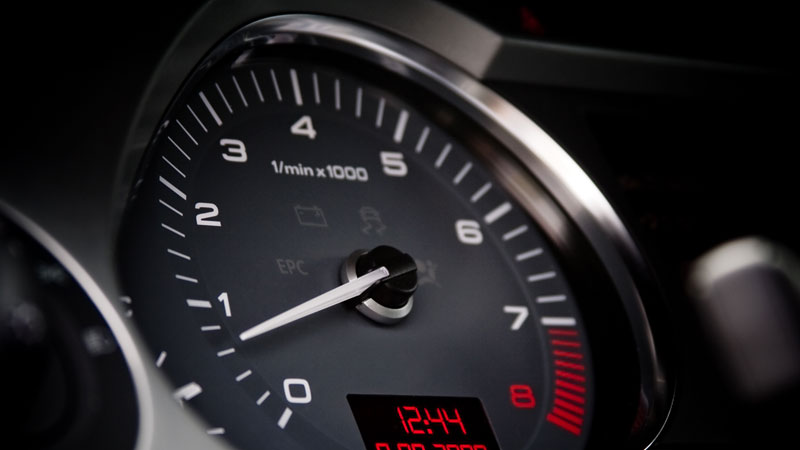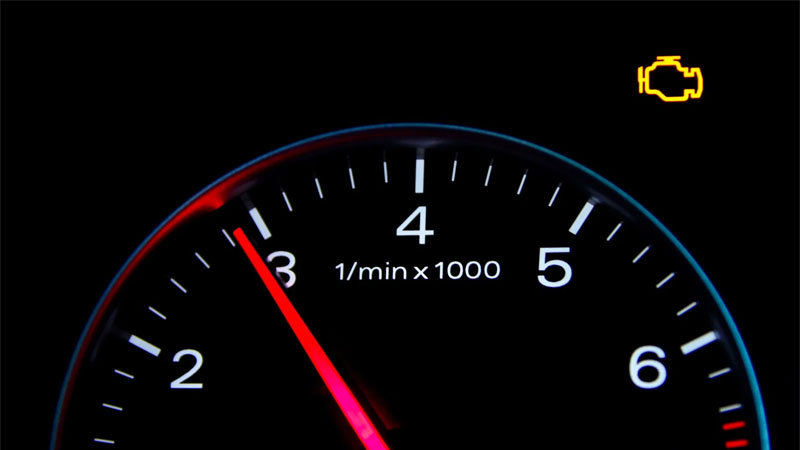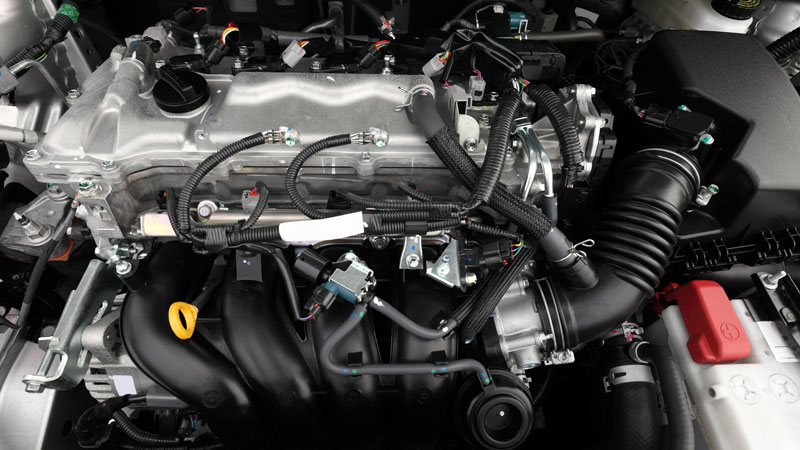An oil control valve (also referred to as a VVT solenoid) is an important component of a vehicle with a variable valve timing (VVT) system. The existence of the system aims to control the performance of the engine utilizing two methods to retard and advance camshaft angle. If your oil control valve goes bad, you’ll have problems.
To understand oil control valves, you must first understand how variable valve timing works.
What is Variable Valve Timing? (VVT)

Camshafts control the timing of the intake and exhaust valves. On a dual overhead engine, there is typically one intake camshaft and one exhaust camshaft per cylinder bank. These camshafts are timed to the crankshaft via a timing belt or timing chain.
On VVT engines, camshafts can move independently of the rest of the timing system, allowing for earlier or later valve lift. This system goes by many names depending on the vehicle make, but some examples are Valvelift for Audi, FCT for Ford, MIVEC for Mitsubishi, i-VTEC/VTEC for Honda and Acura, AVLS/AVCS for Subaru, and VVT-i for Toyota.
What is an Oil Control Valve?
The camshafts are adjusted by oil flowing through the VVT solenoid or oil control valve.
The oil control valve, in this case is controlled by the engine control module or commonly referred to as ECU or ECM. The oil control valve is responsible for changing the camshaft phase at the right time in the variable valve timing system.
In general, an oil control valve has several functions that are vital. These include: saving fuel usage, reducing gas emissions generated by the vehicle, and improving engine performance.
Below, we go over some common symptoms of a bad oil control valve so that you can better diagnose if this component is the cause of your problems in your variable valve timing enabled engine.
Bad Oil Control Valve Symptoms
1) Poor Fuel Economy

As already mentioned, one of the main purposes of variable valve timing is to make sure that the valves open and close at the right time to boost engine performance as well as to reduce the consumption of fuel.
If the VVT solenoid stops working, the whole system may be compromised, in which may result in intake and exhaust valves opening and closing at the wrong time. This in turn can cause a drastic reduction in how many miles you can travel per gallon of fuel.
2) Rough Engine Idle

The next thing that you need to consider is the VVT system on your vehicle. This system will automatically be activated when your car’s RPM is higher than normal or there is an additional requirement for power such as when passing a another vehicle on an incline.
If the VVT solenoid in your car is faulty, it can cause the engine to idle rough. The engine RPM will fluctuate which can directly result in a reduction of power generated by your car.
Although there are many other causes for rough idling, a failing oil control valve should be considered on cars equipped with VVT technology.
3) Check Engine Light

Like when other electronic components of an engine fail, the vehicle’s computer can sense a oil control valve failure and in turn turn on the check engine light in your instrument cluster.
Using a diagnostic scanner, you can determine if this part is the cause of your problems or if it’s something entirely different.
4) Poor Engine Performance

VVT has the ability to generate more power or save more fuel depending on the phase of the camshafts.
If your VVT solenoid is experiencing issue due to a faulty oil control valve, you may notice a reduction in engine performance, as the VVT system may not be able to optimize the engine for peak power generation.
5) Engine Knock or Misfires

Engine knock, also called predetonation, is a phenomenon that occurs when gasoline combusts before the spark plug ignites the air-fuel mixture.
Since this ignition happens sooner than the ECU planned for, this combustion cycle can waste fuel and reduce engine power. Knock can also harm the engine if the knock event is severe enough.
A bad oil control valve may cause engine knock if the camshaft phase is stuck in an aggressive setting, causing the valves to open or close at the wrong time. This could also cause a misfire, when the air-fuel mixture ignites poorly or fails to ignite entirely.
What Causes a Faulty Oil Control Valve?
Oil is almost always the main cause of a VVT solenoid going bad. Most often, old oil is the culprit. As oil goes through an engine, over time, the combination of heat and small impurities cause the oil to thicken.
If it goes on long enough before an oil change, the consistency of the engine oil is comparable to sludge.
Because it’s so thick, it can no longer flow through the valve and literally clogs it up to cause the failure. This is yet another reason why regular oil changes are so important. In addition, if the engine oil level gets too low, this too can cause the oil control valve to go bad.
There are some quality oil additives you may be able to use to clear up the clogged oil channels a bit. Only do this after you’ve changed the oil, though; additives won’t help much if your oil hasn’t been changed in 20,000 miles.
- Power Windows Not Working? (10 Common Causes and How to Fix) - February 8, 2024
- 14 Causes of a Car Losing Power When Accelerating - January 23, 2024
- 13 Causes of Poor Gas Mileage (Increase Your MPG) - December 13, 2023


Had a flickering oilcan light shortly after an oil change. Oil levels seemed fine, but we took it back to the service station to double check and they suggested perhaps a faulty oil level sensor. As long as visual inspection of oil level checked OK, i was fine with the flicker. A second oil change and still the flicker… then the check engine light. Code indicated the camshaft [timing oil control valve] position sensor – bank 2. [P0022]
Is the flickering oilcan a coincidence, or is there an actual correlation? I guess we’ll see after I change the sensor…
I don’t know. I wonder if you have an intermittent drop in oil pressure. Did you have them put the correct oil viscosity in?
Can a oil control valve cause my cam shafts to have a timing issue?
Can a VVT solenoid cause a severe knock right at the cam? Getting a very loud knock that sounds like a rod knock at the cam. It is time with the cam revolution
Sounds like it might be a lifter or something. I wouldn’t expect the solenoid itself to make this sound.
I change the oil and the solenoid and I still have the check engine even though I erase it it will still pop out
I plug in the OCV of my Elantra 2013 and rpm goes to 1500 n stays and when I take them off it drops within the range of 700-900. What’s wrong with my car cause I have changed the vvt too
can a faulty VVT solenoid cause a really rough hard start up only in the morning when the engine is cold or when you let the engine cool down cuz that’s what happens to my car every time when it’s warm it fires up no problem
It’s possible. What makes you think the hard starting is caused by a bad VVT solenoid?
Can a intermittent vvt solenoid cause the egr/vvt monitor not to complete for smog purposes? Inhave a 2012 challenger srt8 and can not get the vvt monitor to be complete, I have done the dodge drive cycle over 5 time, with no success, all other monitors are complete. Help?
Every state has its own rules, but generally a check engine light will cause a vehicle to fail smog. An intermittent VVT issue will probably throw a code and keep you from passing.
Assuming the VVT system is working properly, there should be a procedure to complete the readiness check for your Challenger. Here’s an example for a Kia Borrego. If you do a bit of googling with your make and model, you should be able to find something Challenger specific if this process doesn’t work for you. https://static.nhtsa.gov/odi/tsbs/2015/MC-10089083-5448.pdf
If my car is on position and or it’s running and if I test the voltage on the solenoid connection will it read anything because my car is not reading any voltage and it’s making a grinding nose
Good common sense information. Thank you.